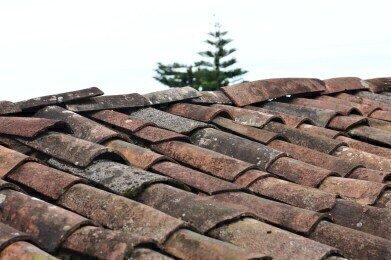Environmental Laboratory
What Are Solar Shingles?
Oct 13 2015
We’ve all heard of solar panels, right? With the increased efficiency of solar power technology, the falling prices in panels themselves and government subsidies for investment in the energy source, many of us even have solar panels installed on our rooftops. Such an investment provides clean, renewable energy for our homes and on occasion, a surplus which we can sell back to the grid for a small profit.
But what about solar shingles? These less headline-grabbing alternative to glass panels work upon the same principles as their more popular brethren, using photovoltaic (PV) cells to separate electrons from a photon (ray of sunlight) and store them aside for harvesting electricity. Indeed, this is the way all solar energy works. The difference between shingles and panels is that quite simply, shingles offer the added benefit of serving as viable roofing materials for your home (panels must be installed atop already existing rooftop covering).
How Much Energy Can Solar Shingles Generate?
In theory, a solar-shingled roof could generate 100% of a building’s energy needs – and even more. They are capable of absorbing scattered sunshine or even that which is obscured by clouds on rainy days, meaning that the sun doesn’t have to shine directly in order for you to harvest its power.
In fact, the country which utilises solar shingles more than any other is Germany, which has far more grey, dreary days than many countries around the world, including all 50 American states. Of course, in places which enjoy year-round sunshine, solar shingles will really come into their own and provide an excess amount of energy.
The main factors which affect how much electricity can be produced from solar shingles boil down:
- The quantity of sunlight which the building receives throughout the year in its precise geographical location
- The rooftop area available which faces southern skies
- The utility rates of the particular building in question
- The efficiency of the shingles themselves
- The consumption habits of the building’s inhabitants
For more in-depth information on precise measurements regarding solar power and similar technology, check out this article.
The Cost Differential
Perhaps the main difference between solar shingles and solar panels is the cost margin. While prices for solar panels have been falling rapidly due to mass-production techniques pioneered in China and cheaper technology, shingles remain more expensive.
Why is this? Well, shingles are far smaller than panels, meaning many more of them are required to do the same job. Furthermore, installing them entails much more work, since every single individual shingle will have to be painstakingly installed and wired up to the mains. In this respect, shingles represent a more significant investment than panels – but one that is likely to last a lot longer, too.
Digital Edition
IET 34.2 March 2024
April 2024
Gas Detection - Biogas batch fermentation system for laboratory use with automatic gas analysis in real time Water/Wastewater - Upcycling sensors for sustainable nature management - Prist...
View all digital editions
Events
Apr 22 2024 Hannover, Germany
Apr 22 2024 Marrakech, Morroco
Apr 23 2024 Kuala Lumpur, Malaysia
Apr 23 2024 Kintex, South Korea
Apr 23 2024 Edmonton, AB, Canada


















